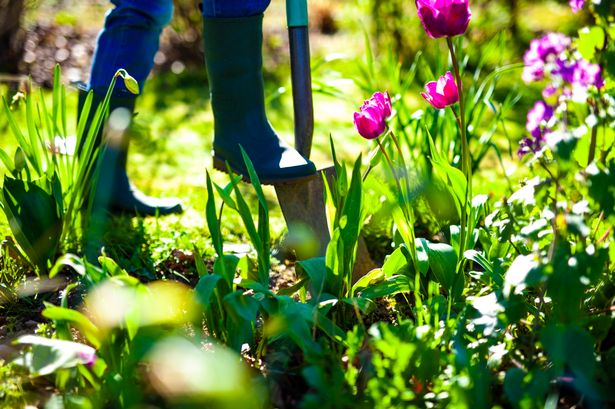Slugs are active for most of the year but are a particular problem in spring Slugs are active for most of the year but are a particular problem in spring(Image: Getty Images)
Slugs are active for most of the year but are a particular problem in spring(Image: Getty Images)
The UK has experienced above average temperatures for this time of year. Over the last couple of weeks parts of the nation have enjoyed temperatures of above 20C.
While the heat may be music to the ears of gardeners, there is a concern about plants scorching. As plants, flowers and vegetables grow we may find more bugs in our gardens.
They are a nuisance for many people trying to make their gardens look nice and plants grow to their full potential. They munch the new growth of plants, demolish seedlings and munch holes in leaves, stems, flowers, tubers and bulbs and potatoes.
Slugs are active for most of the year but are a particular problem in spring, when there’s plenty of young growth for them to eat. According to Gardeners World magazine, they are mostly active after dark, especially when it is warm and damp.
The Royal Horticultural Society (RHS), a UK-based gardening charity focus on promoting horticulture, encouraging plant life, and improving gardening practices. They have also shared advice about gardening in warmer conditions, when slugs may be more present.
Slugs and snails are a normal part of the garden ecosystem, the RHS suggest it’s much better to learn to live with them, especially if you have a garden that has the right conditions for them.
The RHS say slugs and snails “cannot and should not be eradicated.” Instead, the best tactic is to place strategic controls around the most delicate growth.
Some traps you can use to manage their population include a scooped-out half orange. RHS states: “Traps, such as scooped-out half orange, grapefruit, or melon skins, can be laid out cut side down or jars part-filled with beer and sunk into the soil near vulnerable plants.
“Check and empty these regularly, preferably every morning. Proprietary traps are also available from garden centres and mail-order suppliers.”
Attracted to the citrus smell, the snails and slugs will become stuck in the bowl shape of the fruit. You should check the fruit daily, ideally first thing in the morning, and move it far away from your most delicate plants.
The RHS has shared a list of plants that are most likely to be targeted by slugs and snails. The full list is below:
Herbaceous plants
Acanthus mollis (bear’s breeches)Achillea filipendulinaAgapanthus hybrids and cultivarsAlchemilla mollis (lady’s mantle)Anemone × hybrida (Japanese anemone), A. hupehensis (Japanese anemone)Antirrhinum majus (snapdragon)Aquilegia speciesArmeria speciesAster amellus, A.× frikartii, A. novae-angliae (Michaelmas daisies)Astilbe × arendsiiAstrantia majorBergenia (elephant’s ears)Centaurea dealbata, C. montanaCorydalis luteaCynara cardunculus (globe artichoke)Dicentra spectabilis (bleeding heart)Digitalis purpurea (foxglove)Eryngium speciesEuphorbia species (spurges)Foeniculum vulgare (fennel)Fuchsia cultivarsGaillardia aristataGeranium speciesGeum chiloenseHemerocallis cultivars (day lilies)Papaver nudicaule (Iceland poppy)PelargoniumPhlox paniculataPhysostegia virginiana (obedient plant)Polemonium foliosissimumPolygonum speciesPotentilla hybrids and cultivarsPulmonaria species (lungwort)Rudbeckia fulgidaSalvia × superbaSaxifraga × urbium (London pride)Scabiosa caucasica (scabious)Sedum spectabile (ice plant)Sempervivum species (houseleeks)Sisyrinchium speciesSolidago species (golden rod)Stachys macranthaTanacetum coccineum (pyrethrum)Thalictrum aquilegiifoliumTradescantia virginianaTropaeolum species (nasturtium)Verbascum species (mullein)

